Top 10 ambient records of all time
 You hardly need a news report to tell you about the healing power of music. Many studies over the years have confirmed our own personal experiences: music can positively affect our moods. Like purposely turning your mouth into a smile, you can immediately feel happier, more inspired and even relaxed when you listen to your favorite songs.
You hardly need a news report to tell you about the healing power of music. Many studies over the years have confirmed our own personal experiences: music can positively affect our moods. Like purposely turning your mouth into a smile, you can immediately feel happier, more inspired and even relaxed when you listen to your favorite songs.
Any music will do, but doctors and healing professionals often recommend ambient music therapy for therapeutic purposes. Can you just imagine getting this advice? “Listen to these two CDs, and then call me in the morning!”
The therapeutic qualities of music have been recognized since time of Plato and Aristotle! Music therapy, according to the American Music Therapy Association (AMTA), is a well-established health profession similar to occupational therapy and physical therapy, that uses music to therapeutically address physical, psychological, cognitive, behavioral and social functioning.
Ambient music therapy can be used in many settings. Some people put on the music to help them relax and fall asleep. You might hear it during a massage or at a yoga class. Therapists often recommend listening to new age music artists during meditation and deep breathing exercises. Even fussy babies often fall asleep with ambient music therapy.
As for the music itself, I will just go out and quote Brian Eno, whom invented the genre and its idiosyncracies in 1978 on his album : Ambient 1 : music for airports : An ambience is defined as an atmosphere, or a surrounding influence: a tint.
So here is my TOP 10 AMBIENT records of all time :
1) Klf : Chill out
 Chill out is an album released in 1990 by the English band Klf that has basically defined what chill out was about at that span as the concept of a chill-out room only became necessary within the rarified rave culture of the ’80s and ’90s, when club-goers needed a respite from Ecstacy-induced whirling and the random hugging of strangers.
Chill out is an album released in 1990 by the English band Klf that has basically defined what chill out was about at that span as the concept of a chill-out room only became necessary within the rarified rave culture of the ’80s and ’90s, when club-goers needed a respite from Ecstacy-induced whirling and the random hugging of strangers.
It consists of 40 minutes supposedly excerpted from a 480 minutes of a live chill room performance. This was back when chill was unheard of (or at least cutting edge). Strangely enough, it’s at least 50% Orb, and was just made at the KLF’s studios. All I can say is that sounds like a mystical journey through the English countryside. If there’s only one ambient album you ever buy, buy this one too.
One of the initial works in the ambient house canon, Chill Out is the practically beatless soundtrack to a late-night journey along the Gulf Coast, and the track titles tells much of the story: “Six Hours to Louisiana, Black Coffee Going Cold,” “3AM Somewhere Out of Beaumont,” “Elvis on the Radio, Steel Guitar in My Soul.” Recorded live by Drummond and Cauty (with much unintended help from sample victims Elvis Presley, Fleetwood Mac, and the throat singers of Tüva), Chill Out consists largely of fragmented, heavily reverbed steel guitar, environmental sounds (birds, trains), occasional synth, and an angelic vocal chorus repeating the KLF’s own “Justified and Ancient” theme.
Say what you will about mind-expanding drugs, but without them, the world wouldn’t have Dark side of the moon or KLF’s Chill out. On Chill out, listeners are treated to a sonic collage that works as both fascinating listening and an aural blanket in which to wrap one self to counteract the affect of too many pinging synapses. Each song here is a hallucinatory vignette, filled with sounds that could have been collected from dreams. A sleepy sax floats over ocean noises and seagulls in “Melody From a Past Life Keeps Pulling Me Back”, while elsewhere are heavenly choirs, railroad ambience, Tibetan chants, stuttering synthesizers, a snippet of Elvis Presley singing “In the Ghetto”, sounds of thunder, and disembodied voices off the radio. Throughout, Drummond and Cauty display an instinctive talent for wallpaper music that’s truly diverting, making Chill Out one of the essential ambient albums.
KLF : Madrugada eterna / 1990 : Chill out / TVT Wax trax
2) The ORB : Adventures beyond the ultraworld / 1991 / Big Life
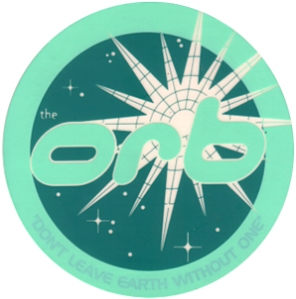 The Orb virtually invented the electronic genre known as ambient house, resurrecting slower, more soulful rhythms and providing a soundtrack for early-morning ravers once the clubs closed their doors. The group popularized the genre as well, by appearing on the British chart show Top of the Pops and hitting number one in the U.K. with the 1992 album U.F.Orb. Frontman Dr. Alex Paterson’s formula was quite simple : he slowed down the rhythms of classic Chicago house and added synthwork and effects inspired by ’70s ambient pioneers Brian Eno and Tangerine Dream. To make the whole a bit more listenable, as opposed to danceable, obscure vocal samples were looped, usually providing a theme for tracks which lacked singing. Much like the early Orb-related project recorded as Space, Adventures Beyond the Ultraworld simulates a journey through the outer realms — progressing from the soaring ambient-pop of “Little Fluffy Clouds” and the stoned “Back Side of the Moon” (a veiled Pink Floyd reference) to “Into the Fourth Dimension” and ending (after more than two hours) with the glorious live mix of “A Huge Ever Growing Pulsating Brain.” A varied cast of samples (Flash Gordon, space broadcasts, foreign-language whispers) and warm synthesizer tones provide a convincing bed for the midtempo house beats and occasionally dub-inflected ambience. With a clever balance of BBC Radiophonics Workshop soundtracks, 70s ambient meister-works by Eno, Steve Hillage, and Floyd, plus the steady influence of Larry Heard’s sublime Chicago house, Adventures Beyond the Ultraworld is the album that defined the ambient house movement.
The Orb virtually invented the electronic genre known as ambient house, resurrecting slower, more soulful rhythms and providing a soundtrack for early-morning ravers once the clubs closed their doors. The group popularized the genre as well, by appearing on the British chart show Top of the Pops and hitting number one in the U.K. with the 1992 album U.F.Orb. Frontman Dr. Alex Paterson’s formula was quite simple : he slowed down the rhythms of classic Chicago house and added synthwork and effects inspired by ’70s ambient pioneers Brian Eno and Tangerine Dream. To make the whole a bit more listenable, as opposed to danceable, obscure vocal samples were looped, usually providing a theme for tracks which lacked singing. Much like the early Orb-related project recorded as Space, Adventures Beyond the Ultraworld simulates a journey through the outer realms — progressing from the soaring ambient-pop of “Little Fluffy Clouds” and the stoned “Back Side of the Moon” (a veiled Pink Floyd reference) to “Into the Fourth Dimension” and ending (after more than two hours) with the glorious live mix of “A Huge Ever Growing Pulsating Brain.” A varied cast of samples (Flash Gordon, space broadcasts, foreign-language whispers) and warm synthesizer tones provide a convincing bed for the midtempo house beats and occasionally dub-inflected ambience. With a clever balance of BBC Radiophonics Workshop soundtracks, 70s ambient meister-works by Eno, Steve Hillage, and Floyd, plus the steady influence of Larry Heard’s sublime Chicago house, Adventures Beyond the Ultraworld is the album that defined the ambient house movement.
The first Orb album was also entirely new when it appeared : a low-key dance record, with echoes and swells more than up-front tunes, stoner-level dub bass, and all sorts of samples and sounds like seagulls, film clips, astronaut voices, bits of disco–fluttering through the mix like hallucinations. Essentially a techno album for tired dancers, it’s held up nicely over time, thanks to its intricate, dreamy sonics. Beyond the classic “Little Fluffy Clouds”–a set of interlocking synth hooks and loping percussion, held together by a cut-up sample of Rickie Lee Jones talking about the skies on Little fluffy clouds.
One of my top 5 favorite records ever was released in 1990. Not talking about Celine Dion but Little fluffy clouds by The british band The Orb, fonded by Alex Patterson (see picture below) and Jimmy Cauty of KLF fame. The Orb’s name comes from Woody Allen’s Sleeper, where The orgasmatron, a fictional electromechanical related device, an orgasmic orb, in the fictive future society of 2173, acts as a large cylinder big enough to contain a single person. Once entered, it contains some future technology that induces orgasms. It’s as if Patterson would suggest The Orb’s music is capable of generating orgasm, which may do so after repeated listening… Little Fluffy Clouds was the first single from The album Adventures beyond the Ultraworld. Back then, their music was classified as ambient house but it was so weird and original. I don’t think people appreciate how much the ORB were geniuses of an era. They updated Brian Eno and Tangerine dream’s soundscapes with the post-rave era, and builded a genre in itself : ambient dub. They were pioneers in bringing slow motion dubby beats with ambient atmosphere, and that was way back in 1989 and 1990, 22 years ago. This was the first “techno” record I had heard and I fell totally in love with the genre from the get go. Atmospheric music with beats, a different array of samples, amazing production and above all, a genuine sense of humor. Little fluffy clouds was centered on clips from an interview with Rickie Lee Jones in which she recalls picturesque images of her childhood. Critics and fans sometimes attribute the odd nasal tonality of Jones’ voice to drug use, though Jones later claimed that it was the result of a heavy cold. The sample comes from a conversation between Jones and Levar Burton (who played in the TV series Roots) on the children’s television program Reading Rainbow. The quote taken as the voice sample goes on like this :
Jones: “They went on forever – They – When I w- We lived in Arizona, and the skies always had little fluffy clouds in ‘em, and, uh… they were long… and clear and… there were lots of stars at night. And, uh, when it would rain, it would all turn – it- They were beautiful, the most beautiful skies as a matter of fact. Um, the sunsets were purple and red and yellow and on fire, and the clouds would catch the colors everywhere. That’s uh, neat cause I used to look at them all the time, when I was little. You don’t see that. You might still see them in the desert.”
The song also uses a harmonica sample from Ennio Morricone’s The Man With The Harmonica (from the film Once Upon a Time in the West) and parts of Electric Counterpoint, a piece for multitracked guitars composed by Steve Reich and recorded by Pat Metheny. Reich was quite happy with the end result. “Little Fluffy Clouds” was used as the music to a Volkswagen commercial for the New beetle in the late 1990s, accompanied by video of the New Beetle rotating and changing color to the beat of the music. As for the rest of the album, Adventures Beyond The Ultraworld opens with the crowing of a cockerel, the rich tones of a Radio 4 announcer declaring that, “Over the past few years, to the traditional sounds of an English summer – the drone of lawnmowers, the smack of leather on willow – has been added a new noise…”, which could refer either to the fictional testing of The Orb’s spaceship or to the 120bpm music that burst out of warehouses in the late-eighties, before the hazy sounds of Rickie Lee Jones fondly recalling the summer skies of her childhood drifts in. So begins Little Fluffy Clouds, the still wonderful opening track on the album. Although this is often erroneously called ambient house, there is little of Brian Eno’s Music For Airports here – Little Fluffy Clouds is a glorious flashback to the acid house boom of a few years earlier and the familiar burbling of a Roland 303 underpins Jones’ story. Rickie Lee Jones claimed that her suitably influenced tones were the result of a heavy cold and sued Big Life, The Orb’s record company settled out of court with her, but Little Fluffy Cloulds provided Jones with her most memorable song in many years and even after twenty two years, it still sounds fantastic.
The Orb : Little fluffy clouds [1990 : Adventures beyond the Ultraworld]
3) Aphex twin : Selected ambient works vol. 2 / Warp-Sire [1994]
 Selected Ambient Works, Vol. 2 is a more difficult and challenging album than Aphex Twin’s previous collection. The music is all texture; there are only the faintest traces of beats and forward movement. Instead, all of these untitled tracks are long, unsettling electronic soundscapes, alternately quiet and confrontational; although most of the music is rather subdued, it is never easy listening. While some listeners may find this double-disc album dull (both discs run over 70 minutes), many listeners will be intrigued and fascinated by the intricately detailed music of Aphex Twin.
Selected Ambient Works, Vol. 2 is a more difficult and challenging album than Aphex Twin’s previous collection. The music is all texture; there are only the faintest traces of beats and forward movement. Instead, all of these untitled tracks are long, unsettling electronic soundscapes, alternately quiet and confrontational; although most of the music is rather subdued, it is never easy listening. While some listeners may find this double-disc album dull (both discs run over 70 minutes), many listeners will be intrigued and fascinated by the intricately detailed music of Aphex Twin.
British electronics wunderboy Richard James (alias Aphex Twin, AFX, Polygon Window, etc.) claims he heard the compositions on Selected Ambient Works, Volume II in lucid dreams. Like abstract paintings composed of shades of a single color, James’s resonant explorations of specific timbres linger close to a central idea on each cut, incorporating just enough variation to remain disturbing. While its predecessor, Selected Ambient Works ’85-’92 drew on seven years’ worth of material, the uniform quality of these untitled tracks, plus their judicious sequencing, suggests they were assembled over a shorter period. Clocking in at over 150 minutes, the double-disc set (if this is “selected,” how many hours of outtakes remain?) provides an exemplary introduction to the quieter facets of James’s expansive, idiosyncratic aesthetic. It’s much smoother and lower in frequency. About half the tracks have deep beats of some sort or another, and a few tracks have controlled freakiness. Genius is often close to craziness and RDJ is indeed proof of this.
Aphex Twin : Rhubarb / Selected ambient works vol. 2 / 1994 : Sire
4) Global communication : 76 : 14 / Dedicated [1994]
 One of the most significant releases to cross the ambient currents of the 1990s, 76:14 places itself alongside benchmark electronic releases from Brian Eno, the Orb, and the Future Sound of London. This synth-dominated venture allows the armchair traveler to indulge in atmospheric wanderings which suggest virtual galactic discovery. But often enough the textured beats keep things grounded to dissuade the listener from being lost in the void. Vocal samples from nine languages also remind us of the international and diplomatic intentions of this otherwise electro-instrumental album. Strap in and enjoy the lift-off for all mankind.
One of the most significant releases to cross the ambient currents of the 1990s, 76:14 places itself alongside benchmark electronic releases from Brian Eno, the Orb, and the Future Sound of London. This synth-dominated venture allows the armchair traveler to indulge in atmospheric wanderings which suggest virtual galactic discovery. But often enough the textured beats keep things grounded to dissuade the listener from being lost in the void. Vocal samples from nine languages also remind us of the international and diplomatic intentions of this otherwise electro-instrumental album. Strap in and enjoy the lift-off for all mankind.
Tempering the industrial tilt of their previous Reload material with slower, more graceful rhythms and an ear for melody unmatched by any in the downtempo crowd, Mark Pritchard and Tom Middleton produced the single best work in the ambient house canon. The tick-tock beats and tidal flair of “14:31″ nowadays called Ob-selon-mi-os is proof of the duo’s superb balance of beauty with a haunting quality more in line with Vangelis than Larry Heard (though both producers were heavy influences on the album). On several tracks the darkside appears to take over — the pinging ambience of “9:39″ — but for most of 76:14 the melodies and slow-moving rhythms chart a course toward the upbeat and positive.
Global communication : Ob selon mi os or know as 14:31 (Notice how naming songs after minutes makes the listener focus on the music instead of the namechecking…) released in 1994 on Dedicated : Album 76:14
5) Biosphere : Substrata / 1997
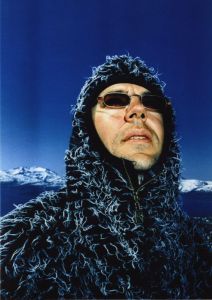 Biosphere is the main recording name of Geir Jenssen (born 1962), a Norwegian musician who has released a notable catalogue of ambient music. He is well known for his early “ambient techno” aesthetic and later for his “arctic ambient” style, his use of music loops, and peculiar samples from sci-fi sources. His track “Novelty Waves” was used for the 1995 campaign of Levi’s. His 1997 album Substrata was voted by Hyperreal as one of the all time classic ambient albums. But over the last few years his albums (such as Cirque, Shenzou, Autour de la lune, Dropsonde and N-plants) have embodied some touches of jazz, classical, drone and even some dub-techno. His unique sound signature is quite special : an immense feeling of being absorbed in the cold winter. Suffice to say, in my opinion, Biosphere isn’t just making ambient music, his music IS pristine ambiance only equaled by Pete Namlook from to 1992 to 2012. The music that space colonies would probably play. Geir Jenssen trancends any genres of music. He adopted Biosphere, as his alias in a nod to many of his compositions having been assimilated into an ‘Arctic Sound’ a somewhat reductive term concerning his work since it is much more than a simple reflection of his environment-he proposes. Animated by attention to detail, rich textures, a natural minimalist aesthetic-aquatic brushstrokes, echoes of distant vessels, and glacial glitches-and other frequency maneuvers, he composes a ‘cinema for the ears’ that irremediably positions the listener in a profound and pensive sonic dimension. His music echoes impressions and slides, and eschews any pretences of rigid formalism or the dichotomy often found between sound and image. His digital manipulations of natural images or extreme situations from everyday life enhance perception, while constituting a genuine invitation to an escape toward infinite horizons. A dual display as unreal and poetic.
Biosphere is the main recording name of Geir Jenssen (born 1962), a Norwegian musician who has released a notable catalogue of ambient music. He is well known for his early “ambient techno” aesthetic and later for his “arctic ambient” style, his use of music loops, and peculiar samples from sci-fi sources. His track “Novelty Waves” was used for the 1995 campaign of Levi’s. His 1997 album Substrata was voted by Hyperreal as one of the all time classic ambient albums. But over the last few years his albums (such as Cirque, Shenzou, Autour de la lune, Dropsonde and N-plants) have embodied some touches of jazz, classical, drone and even some dub-techno. His unique sound signature is quite special : an immense feeling of being absorbed in the cold winter. Suffice to say, in my opinion, Biosphere isn’t just making ambient music, his music IS pristine ambiance only equaled by Pete Namlook from to 1992 to 2012. The music that space colonies would probably play. Geir Jenssen trancends any genres of music. He adopted Biosphere, as his alias in a nod to many of his compositions having been assimilated into an ‘Arctic Sound’ a somewhat reductive term concerning his work since it is much more than a simple reflection of his environment-he proposes. Animated by attention to detail, rich textures, a natural minimalist aesthetic-aquatic brushstrokes, echoes of distant vessels, and glacial glitches-and other frequency maneuvers, he composes a ‘cinema for the ears’ that irremediably positions the listener in a profound and pensive sonic dimension. His music echoes impressions and slides, and eschews any pretences of rigid formalism or the dichotomy often found between sound and image. His digital manipulations of natural images or extreme situations from everyday life enhance perception, while constituting a genuine invitation to an escape toward infinite horizons. A dual display as unreal and poetic.
6) Dreamfish : Dreamfish / 1993
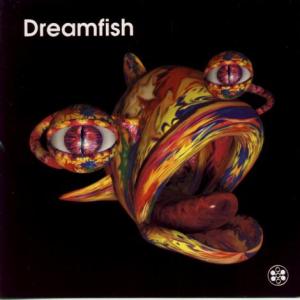 Pete “Namlook” Kuhlmann is a prolific ambient enterprising composer who collaborated with such diverse artists as Richie Hawtin, Bill Laswell, Geir Janssen, Atom Heart and Mixmaster Morris. Based in Frankfurt, Namlook knew injected a degree of inventiveness in the ambient 90’s era by allowing artists to thrive under artistic freedom on FAX. Indeed, FAX distributes the majority of profits from the sale of his albums to their creators. On Dreamfish, Namlook and Mixmaster Morris, come together to pay tribute to the global ocean life and retransmit planing on music. You can imagine yourself submerged in the ocean, after finishing this album and feeling esoteric, psychedelic as the voice of Terence Mc Kenna is sampled on Hymn. With its marine samples and a few voice samples, the whole album is quite a soothing experience. One of the best releases on the defunct Rising High and an amazing sleeve.
Pete “Namlook” Kuhlmann is a prolific ambient enterprising composer who collaborated with such diverse artists as Richie Hawtin, Bill Laswell, Geir Janssen, Atom Heart and Mixmaster Morris. Based in Frankfurt, Namlook knew injected a degree of inventiveness in the ambient 90’s era by allowing artists to thrive under artistic freedom on FAX. Indeed, FAX distributes the majority of profits from the sale of his albums to their creators. On Dreamfish, Namlook and Mixmaster Morris, come together to pay tribute to the global ocean life and retransmit planing on music. You can imagine yourself submerged in the ocean, after finishing this album and feeling esoteric, psychedelic as the voice of Terence Mc Kenna is sampled on Hymn. With its marine samples and a few voice samples, the whole album is quite a soothing experience. One of the best releases on the defunct Rising High and an amazing sleeve.
7) Brian Eno: Music For Airports
We owe the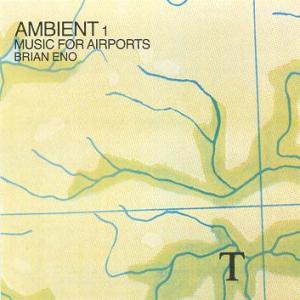 concept of ambient to Brian Eno. With this album, Eno hoped to create music that embodied the effect created by visual art. Like a painting, the compositions of this disc does not require a sustained commitment from the listener; they can remain muted and add atmosphere to a room while having sonic richness. The purpose of Music for airports, was originally to calm the passengers waiting for the plane to fly, some passangers being afraid by such a means of transportation. The disc was even played for a time at the Marine Terminal of New York at LaGuardia Airport in 1978.
concept of ambient to Brian Eno. With this album, Eno hoped to create music that embodied the effect created by visual art. Like a painting, the compositions of this disc does not require a sustained commitment from the listener; they can remain muted and add atmosphere to a room while having sonic richness. The purpose of Music for airports, was originally to calm the passengers waiting for the plane to fly, some passangers being afraid by such a means of transportation. The disc was even played for a time at the Marine Terminal of New York at LaGuardia Airport in 1978.
On Music for Airports Eno uses minimal notes and some loops on tape. His great strength lies in his singular representation of the space environment using silences, piano, synthesizers, feminine voice, and more importantly, the studio as an instrument in itself. The work is divided into four pieces. The concept worked on the principle that at low frequency, and with few elements in the same room, long parts of such song would command constant attention for the listeners. A strange feeling of lightness emanates from this album that has managed to avoid the new age cliches in order to provide a the perfect architectural silence.
8) Tetsu Inoue : Ambient otaku / 1994
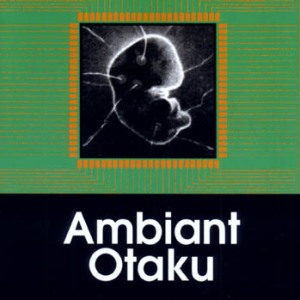 The first solo album from the Japanese Tetsu Inoue, a member FAX who had numerous collaboration with Pete Namlook. Ambient otaku, released in 1994, is a collector’s item sought by the music lovers of the genre. Inoue who samples surrounding sounds using a minidisk, has taken them as well as analog synthesizers on this album in order to distinguish himself with his melodies full abyssal sparse and drifting spaces. Meditative and ethereal. Both timeless and deeply cinematic. Five compositions ranging from 10 to 17 minutes on this disc, with many cosmic sounds reminiscent both Tangerine Dream and Klaus Schulze. This incredible ambient album had been released in 1994 and was 500 copies limited.The music showcase the amazing talents of the Japaneese composer. What we have here is haunting and contemplative atmospherics mixed with field source recordings and sparse percussion.The slow building atmosphere leads to awesome soundscapes and dreamy textures. Not to be missed!
The first solo album from the Japanese Tetsu Inoue, a member FAX who had numerous collaboration with Pete Namlook. Ambient otaku, released in 1994, is a collector’s item sought by the music lovers of the genre. Inoue who samples surrounding sounds using a minidisk, has taken them as well as analog synthesizers on this album in order to distinguish himself with his melodies full abyssal sparse and drifting spaces. Meditative and ethereal. Both timeless and deeply cinematic. Five compositions ranging from 10 to 17 minutes on this disc, with many cosmic sounds reminiscent both Tangerine Dream and Klaus Schulze. This incredible ambient album had been released in 1994 and was 500 copies limited.The music showcase the amazing talents of the Japaneese composer. What we have here is haunting and contemplative atmospherics mixed with field source recordings and sparse percussion.The slow building atmosphere leads to awesome soundscapes and dreamy textures. Not to be missed!
9) Pete Namlook : Air 1 & 2 / 1993 / 1994
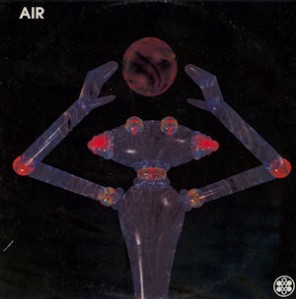 Absolutely beautiful. I really, really like this album, and always have it near my bed ever since I first bought it on CD back in ’93. One of those albums that actually helps calming you down. The first volumes of the Air series are high-water marks for Namlook. Like the Silence series they show some rich ethnic and neo-classical leanings, and they remain particularly effective examples of how he uses live acoustic instruments in an electronic setting. The delicate, tinkling cymbals and soft tom-tom beats on “Je suis seule et triste ici” from Air I, for instance, are utterly refreshing because Namlook is able to maintain a deep electronic ambient feel while still expanding his repertoire. On Wind, he uses a breezing feeling that ressemble the feeling of air. Sheer genius.
Absolutely beautiful. I really, really like this album, and always have it near my bed ever since I first bought it on CD back in ’93. One of those albums that actually helps calming you down. The first volumes of the Air series are high-water marks for Namlook. Like the Silence series they show some rich ethnic and neo-classical leanings, and they remain particularly effective examples of how he uses live acoustic instruments in an electronic setting. The delicate, tinkling cymbals and soft tom-tom beats on “Je suis seule et triste ici” from Air I, for instance, are utterly refreshing because Namlook is able to maintain a deep electronic ambient feel while still expanding his repertoire. On Wind, he uses a breezing feeling that ressemble the feeling of air. Sheer genius.
10) ISHQ : Orchid / 2001 / Dakini records, Interchill
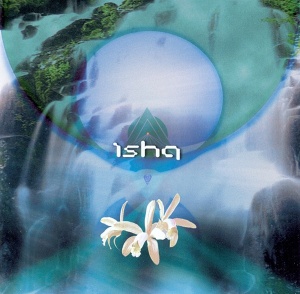 The first solo album from Matt Hiller. A true hidden gem. The music is spacy, but still very “earthly” with all the nature-samples : very hypnotic and almost trance inducing as a feeling. It’s like an eternal drift into Earth or Space. Fluid Earth is a perfect ambient composition. Very reminescent of Brian Eno’s Music for Airports. The album has a lot of incredible harmonies like the sample displayed below. ISHQ is continuing to make music and I recommend pretty much everything he’s done in the past, present and future.
The first solo album from Matt Hiller. A true hidden gem. The music is spacy, but still very “earthly” with all the nature-samples : very hypnotic and almost trance inducing as a feeling. It’s like an eternal drift into Earth or Space. Fluid Earth is a perfect ambient composition. Very reminescent of Brian Eno’s Music for Airports. The album has a lot of incredible harmonies like the sample displayed below. ISHQ is continuing to make music and I recommend pretty much everything he’s done in the past, present and future.
Part 2 of my favorite ambient records of all time, from 11 to 50, can be found here.

Thanks, I only knew three of these. I can’t wait to check out the rest.
These look great. I’ve heard most of these but the ones I hadn’t sound awesome. Wish I’d known about them sooner…thanks! 🙂
Please do a Part Two!
You’ve got great insights about Entertainment, Arts, Dance, Chicago house music, electro, house music, deep soulful house, acid house music, house dancers, keep up the good work!
Every played People Like us and Wobbly’s Music for the Fire….it’s far out.
Very good list. What about top 10 trance?
Really – ‘On Land’ ahead of ‘The Plateaux of Mirror’? No Harold Budd? As good as the KLF album is I wouldn’t classify it as ambient.
KLF chill is ambient, it doesn’t have to be just a tilt as Eno said in order to be ambient. In two seperate surveys, hyperreal THE reference on ambient music have put Chill out in their top 5 : http://music.hyperreal.org/epsilon/info/1999_recommended_ambient.html (Number 5) / http://music.hyperreal.org/epsilon/info/1996_recommended_ambient.html / http://music.hyperreal.org/epsilon/info/2001_classic_ambient.html…besides it’s a top 10 my friend and not a top 20 ! Otherwise I would’ve surely put Apollo: Atmospheres and Soundtracks. Hence the restrictive approach, I also like Robert Rich, Lustmord, there are so many to choose from!
Great list, thanks. A few I own already, but discovered some real gems I didn’t. Perfect bedtime listening!
unfortunately miss a “dr.atmo” release.. perhaps on 11th ;))
check his new downbeat band “atmo and the lightz”.. you will be suprised
greetz from berlin
miss silencio
that’s quite an interesting selection… Here’s mine : http://alaincliche.wordpress.com/2012/12/11/perles-de-la-musique-ambiante/
Great stuff mate!
nice 🙂
I missed half of these first time round. Thank you big much funkyjeff77! Have you heard Robert Leiner “Visions of the Past”. Some great tracks on there! Cheers
Yes 🙂 I love that record.
Cool! Thanks for sharing.
Nice list! 76:14 is one of my favorite chillout albums of all time.
No Woob?
Nothing from the e:mit label at all?
Surely 1194 should be in this list.
Maybe later I m doing a sequel with number 11 to 30 no e:mit on it..!